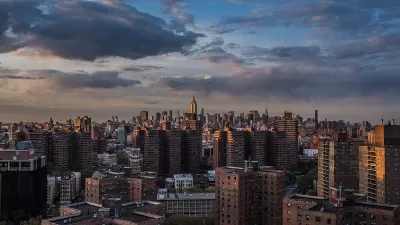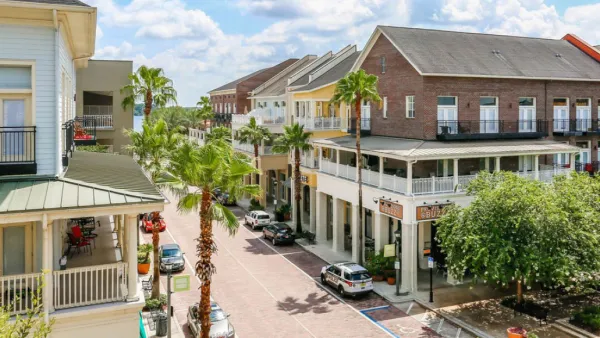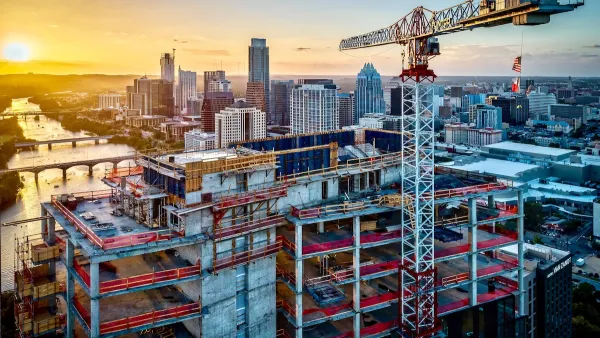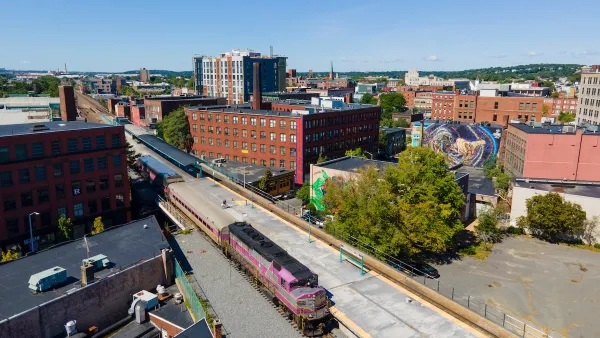The housing shortages caused by restrictive zoning are easy to solve in principle—even if the solutions are politically impossible.

I have written numerous blog posts (for example, here, here and here) about the harms caused by restrictive zoning in the urban context. Such zoning reduces the housing supply in cities, thus increasing housing costs,* which in turn drives people into suburbia, which in turn increases the environmental harms caused by suburban sprawl. But to date, I have not yet suggested a comprehensive remedy to the problem.
I begin with an assumption: when a right or privilege is abused, that right can be taken away. For example, if I abuse my right to carry a firearm by committing felonies, government can prohibit me from possessing a firearm in the future. Similarly, when local governments abused their privilege to create literacy tests for voting (by administering those tests in a racially discriminatory manner) the federal government prohibited the use of literacy tests.
Similarly, some local governments have abused their state-granted right to zone by limiting housing supply; in such situations, state governments should step in and stop the abuse by limiting their right to zone.
Accordingly, I propose that state legislatures pass statutes saying something like this: "Where a city's median sales price exceeds Y times the median household income,** the city, if its population exceeds X people, may not discriminate against housing on the basis of density. Where any housing is allowed, any density of housing is allowed. This law also applies to areas zoned for retail and office use, but not to areas zoned for industry, manufacturing or agriculture. However, the city may enact reasonable height limits, as long as those limits do not prohibit buildings under X stories."
My rule would be limited to larger cities (for example, cities with over 300,000 people) because high housing costs in cities are especially harmful; in addition to reducing regional quality of life, they also accelerate sprawl by encouraging people to move to suburbs in search of cheaper housing. However, a more aggressive legislature could reasonably expand this rule to smaller municipalities, if it believed that the negative effects of high housing costs outweighed the harms caused by sprawl. The rule would be limited to cities with high housing costs because other cities have not abused their zoning privilege to quite the same extent. My version focuses on residential zones because I am willing to accept the common assumption that mixing polluting industry with housing creates a public health menace. By contrast, no such menace exists in office/retail areas.
I added a reference to height limits for two reasons. First, many people who are not afraid of density are opposed to tall buildings, for all sorts of reasons best discussed elsewhere. Second, it seems to me that as long as ten-or twenty-story buildings are allowed, height restrictions alone need not significantly reduce housing supply or density. Mongkok in Hong Kong has 350,000 people per square mile (five times the density of Manhattan)—yet most buildings are only about ten or fifteen stories tall. So if height regulation is limited to true skyscrapers (say, 30 stories and above),*** such regulation will probably not be tremendously harmful (in the context of an otherwise deregulated market).
The traditional "Not In My Back Yard" (NIMBY) arguments against new housing is that new residents increase traffic and change community character. These arguments are wrongheaded because they are essentially "beggar thy neighbor" arguments—if new residents do not create these problems in the city, they will create the same problems somewhere else. For example, suppose a city’s zoning causes 20,000 people to move to suburbs. These people may no longer crowd the streets and subways of the city—but they instead are crowding the roads of the suburbs. In this situation, NIMBY-oriented land use regulation may create a negative-sum game: if these suburbanites drive to jobs in the city, they will create traffic congestion both in the city and in the suburbs, and create regional air pollution by driving more everywhere.
The same is true for the ill-defined idol of "community character." If 20,000 people move to the suburbs, they will change the community character of suburban neighborhoods. In fact, the impact upon community character will be far greater in suburbia; thousands of new residents may change a city neighborhood, but they will change a cornfield even more.
If my bill was enacted, housing supply would eventually rise to meet demand, presumably causing rents and housing prices to go down. In fact, even modest increases in housing supply are holding down rents: for example, rents in Seattle have recently started to decline in response to a surge in vacancies.
*I realize that some people still think that housing supply is unrelated to housing prices; however, I have responded to such arguments here.
**Many commentators seem to think that in a normal housing market, the average house should cost three times median income. So that might be a good place to draw the line.
***30 stories is kind of an arbitrary line, but I suggest it based on my experience living in Manhattan: 10-30 story buildings tend to be for the middle and upper middle classes, where higher buildings tend to be rare and highly luxurious. Having said that, I have not studied the issue in detail.

Planetizen Federal Action Tracker
A weekly monitor of how Trump’s orders and actions are impacting planners and planning in America.

Chicago’s Ghost Rails
Just beneath the surface of the modern city lie the remnants of its expansive early 20th-century streetcar system.

San Antonio and Austin are Fusing Into one Massive Megaregion
The region spanning the two central Texas cities is growing fast, posing challenges for local infrastructure and water supplies.

Since Zion's Shuttles Went Electric “The Smog is Gone”
Visitors to Zion National Park can enjoy the canyon via the nation’s first fully electric park shuttle system.

Trump Distributing DOT Safety Funds at 1/10 Rate of Biden
Funds for Safe Streets and other transportation safety and equity programs are being held up by administrative reviews and conflicts with the Trump administration’s priorities.

German Cities Subsidize Taxis for Women Amid Wave of Violence
Free or low-cost taxi rides can help women navigate cities more safely, but critics say the programs don't address the root causes of violence against women.
Urban Design for Planners 1: Software Tools
This six-course series explores essential urban design concepts using open source software and equips planners with the tools they need to participate fully in the urban design process.
Planning for Universal Design
Learn the tools for implementing Universal Design in planning regulations.
planning NEXT
Appalachian Highlands Housing Partners
Mpact (founded as Rail~Volution)
City of Camden Redevelopment Agency
City of Astoria
City of Portland
City of Laramie






























